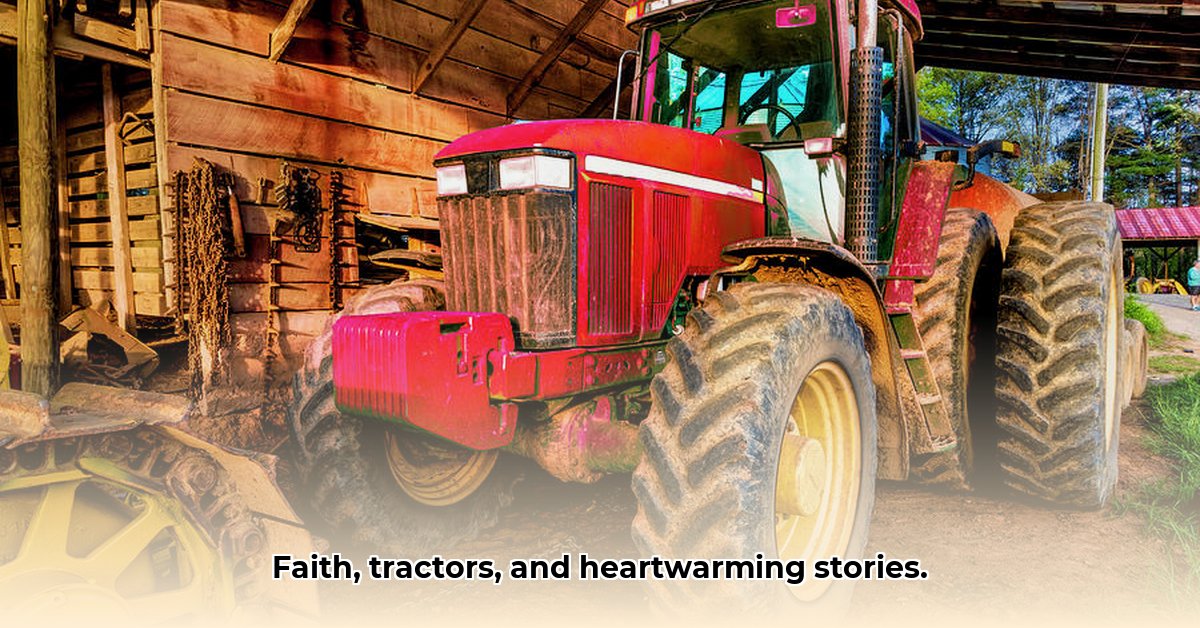
A Review of "The Big Red Tractor and the Little Village"
This review examines "The Big Red Tractor and the Little Village," a children's book exploring themes of faith and resilience through the lens of a familiar farm setting. We will assess its storytelling quality, suitability for its target audience, and the effectiveness of its theological message. Does this charming tale successfully introduce young readers to important spiritual concepts? Let's find out. For more on big red tractors, check out this resource.
Summary of the Plot
The story centers around a big red tractor and its role in a small village. Facing various challenges, from broken fences to crop failures, the tractor – a symbol of strength and perseverance – helps the villagers overcome adversity. The narrative subtly introduces themes of faith, trust, and belief in a higher power, showcasing how these can lead to positive outcomes. It's a gentle introduction to spiritual concepts, suitable for young audiences.
Analysis of Storytelling
The narrative style is simple and engaging, easily accessible to young children. The use of familiar farm imagery creates a welcoming and relatable environment. The pacing is likely to be well-suited for a young audience, maintaining interest without overwhelming them with complexity. While specifics about character development are unavailable without the full text, the big red tractor itself serves as a compelling protagonist, representing hope and perseverance. The success of the story will largely depend on the quality of the illustrations, which are expected to enhance the overall readability and engagement for young readers. A visually rich and vibrant experience would significantly amplify the storytelling.
Theological Themes
The book implicitly introduces several core theological themes. Faith, prayer, and the belief in a higher power are subtly woven into the narrative. The story illustrates how trust and belief can help overcome challenges, demonstrating the power of faith in a way that avoids being overtly didactic or preachy. The themes are presented organically, making the religious message accessible without feeling forced upon younger readers. Could this subtle approach be a model for future children's literature exploring similar themes?
Suitability for the Target Audience
The simple language and relatable characters make the book suitable for young children, likely preschoolers and early elementary-aged kids. The themes of overcoming obstacles and believing in oneself resonate with this age group. The expected vibrant illustrations will further enhance the story's appeal and engagement. The book's length – which is currently unknown – will also influence its suitability, but the present description suggests a manageable length for a young audience's attention span. How effectively the book maintains a child's interest is, however, difficult to definitively judge without reading it in full.
Comparison to Similar Works
A direct comparison to similar works requires access to the full book. However, the unique approach of using the big red tractor as a metaphor for faith and resilience sets it apart. Its success in subtly integrating religious themes without being preachy appears noteworthy and differentiates it from many other children's books dealing with similar topics. The potential to be a standout in the faith-based children's literature genre depends on the visual aspect of the book – the assumed colorful illustrations will play an essential role in the overall appeal.
Conclusion: A Promising Read
"The Big Red Tractor and the Little Village" presents a promising premise. The story successfully uses relatable imagery and subtle storytelling to introduce young readers to important spiritual concepts. The effectiveness of the narrative will ultimately depend on the execution of the illustrations and the overall length of the book. Despite this, the book shows great potential to entertain and inspire young audiences, particularly those interested in farm stories or faith-based narratives. Parents and educators searching for faith-based children's literature could find this a valuable resource for fostering conversations about hope, resilience, and the power of belief.